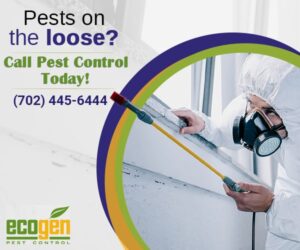When it comes to protecting your home from pests, effectiveness and sustainability should go hand in hand. That’s where Integrated Pest Management, or IPM, comes into play. IPM is a modern, science-based approach to pest control that focuses on long-term prevention and minimal chemical use. Rather than relying solely on pesticide applications, IPM uses a layered strategy that includes inspections, environmental controls, physical barriers, and targeted treatments when necessary.
Whether you’re dealing with ants, roaches, rodents, or stinging insects, IPM prioritizes safety, environmental responsibility, and effectiveness. For homeowners seeking peace of mind without compromising the integrity of their home or yard, it’s a proven and practical solution.

What Makes IPM Different From Traditional Pest Control?
Traditional pest control methods often depend heavily on routine chemical treatments to keep infestations at bay. While this may offer short-term relief, it doesn’t always address the root causes of the problem. IPM, on the other hand, seeks to understand pest behavior and habitat to create a more strategic and preventative system.
With IPM, the emphasis is placed on inspection and diagnosis. The process begins with a detailed assessment of your property to identify pest activity, attractants, and potential entry points. Instead of blanketing an area with chemicals, IPM limits pesticide use to specific situations where non-chemical methods are insufficient.
For instance, if rodents are entering through vents or crawl spaces, sealing those access points is prioritized before any traps or baits are deployed. This method ensures long-term control while reducing exposure risks for pets, children, and beneficial organisms around your home.
Key Components of IPM For Homes
Implementing IPM requires a combination of proactive measures, education, and informed decision-making. Each step in the process builds upon the last to ensure pests are not only removed but also prevented from returning.
Here are the primary elements of a residential IPM plan:
- Inspection: Technicians evaluate indoor and outdoor areas for signs of pest activity, entry points, and food or water sources.
- Identification: Correctly identifying the pest species ensures targeted, effective control and avoids unnecessary treatment.
- Prevention: Structural modifications, sanitation improvements, and moisture control are implemented to make the home less inviting to pests.
- Monitoring: Bait stations, traps, and regular inspections are used to assess the effectiveness of control methods.
- Targeted Treatment: If needed, low-impact or localized pesticides are applied with precision to eliminate infestations with minimal disruption.
By combining these steps, homeowners gain a comprehensive solution that adapts over time and reduces the need for reactive treatments.
Long-Term Advantages of Using IPM
IPM is more than just a method of pest control, it’s a mindset focused on sustainable living and long-term protection. When applied consistently, IPM offers benefits that extend well beyond pest removal.
- Healthier Indoor Air Quality: Less pesticide use means fewer airborne residues or residues on surfaces.
- Lower Risk of Resistance: Targeted application reduces the chance of pests developing resistance to treatment.
- Environmental Responsibility: Protects pollinators and non-target species while preserving soil and water quality.
- Cost Efficiency: Preventative strategies reduce the likelihood of expensive infestations or structural repairs.
- Customizable Solutions: IPM can be tailored to each home’s specific pest pressures, climate, and layout.
This approach is especially important in areas affected by changing environmental conditions. For example, increased dryness can push pests like rodents and insects into homes. Understanding how drought affects pest migration helps reinforce why proactive pest control is more critical than ever.
Common Pests Managed Through IPM
IPM can effectively control a wide range of pests found in and around homes throughout the region. Each species requires a slightly different strategy, and IPM provides the flexibility to adapt based on behavior, habitat, and seasonal activity.
Here’s how IPM addresses some of the most common household pests:
- Ants: Focus is placed on eliminating entry points and food attractants before baiting.
- Cockroaches: Monitoring and sanitation are key, with gels or dusts used only in critical areas.
- Rodents: Emphasis on exclusion methods, such as sealing gaps and managing yard debris.
- Stinging Insects: Nest location, removal strategy, and seasonality all play a role in safe control.
During warmer months, homeowners often experience a spike in activity. To maintain control, layering IPM with seasonal planning, like the five-layer protection against summer surges, helps keep your home protected throughout the year.
Why Expert Guidance Makes the Difference
While IPM principles are well-documented and accessible, execution matters. Proper inspection techniques, knowledge of pest biology, and choosing the correct materials require training and experience. Missteps can lead to ineffective control or even increased infestations if attractants and access points go unaddressed.
Working with professionals ensures each stage of IPM is implemented thoroughly and with the right tools. They’re also able to adjust strategies as new challenges arise, whether it’s a sudden rodent incursion or seasonal insect surge. The result is a balanced, long-term approach to pest control that protects your property without unnecessary disruption.
Upgrade Your Home’s Defense Naturally
For a smarter way to keep pests out year-round, trust a method that’s proven, proactive, and built around your home’s specific needs. Reach out to Ecogen Pest Control for a customized IPM plan that delivers real results while staying environmentally responsible.



